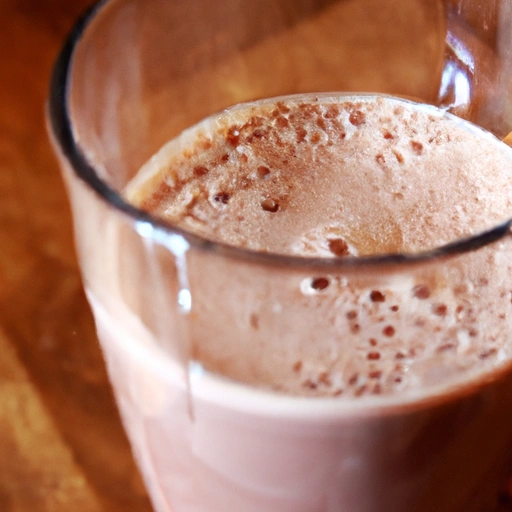Chocolate Milk
Description

Chocolate milk is a sweetened chocolate-flavored variety of traditional milk. It is created by blending milk with cocoa powder and a sweetener, such as sugar or a sugar substitute, and often includes additional flavorings and stabilizers to enhance its taste and consistency. This beloved beverage can be enjoyed cold or hot and is available in various fat contents, from skim to whole milk.
Given its worldwide popularity, chocolate milk is frequently measured in both imperial (US) units such as cups and ounces, and metric units like milliliters and liters, to cater to an international audience.
Common uses
Chocolate milk is widely consumed as a beverage, but it also plays a role in various culinary applications. It is often used as a base for milkshakes, smoothies, hot chocolate, and as a moistening agent in dessert recipes such as cakes and brownies.
Nutritional value
Calories
A typical 8-ounce (approximately 237 ml) serving of chocolate milk contains about 150 to 210 calories, depending on the fat content of the milk used.
Protein
This serving size generally provides about 8 grams of protein, contributing to muscle repair and growth.
Fat
The fat content can vary from 2.5 grams in low-fat chocolate milk to 8 grams in whole chocolate milk per 8-ounce serving.
Carbohydrates
Carbohydrates, mostly in the form of sugars, are present in amounts of 20 to 26 grams per serving, which include 12 to 18 grams of added sugars.
Vitamins
Chocolate milk is a good source of vitamins D and B12, essential for bone health and energy metabolism, respectively.
Minerals
It also contains calcium, phosphorus, and potassium, which are vital for maintaining strong bones, energy production, and cardiovascular health.
Health benefits
Chocolate milk is renowned for its role in post-exercise recovery due to its balance of carbohydrates and protein. The protein aids in muscle repair, while the carbohydrates help replenish glycogen stores. The beverage's vitamins and minerals support overall health and wellbeing.
Potential risks
Due to its added sugars, chocolate milk can contribute to dental caries and, if consumed excessively, might lead to weight gain. It may also not be suitable for those with lactose intolerance or a milk allergy.
Common recipes
Chocolate milk is used in desserts like chocolate milkshakes, chocolate puddings, and is even incorporated into some savory sauces. It's a favorite for creating rich, chocolatey breakfast items such as pancakes or oatmeal.
Cooking methods
It can be heated for hot chocolate or used cold in various recipes. Its application does not usually require special cooking methods, but it may be blended, whipped, or frothed for different textures.
Pairing with other ingredients
Chocolate milk pairs well with baked goods, fruits like strawberries or bananas, and is often enjoyed alongside coffee or incorporated into coffee beverages for a mocha flavor.
Summary
Chocolate milk is a versatile and delicious ingredient enjoyed around the world. It provides essential nutrients and quick energy, making it a popular choice among athletes and active individuals. As part of a balanced diet, it offers both culinary diversity and delightful flavors.